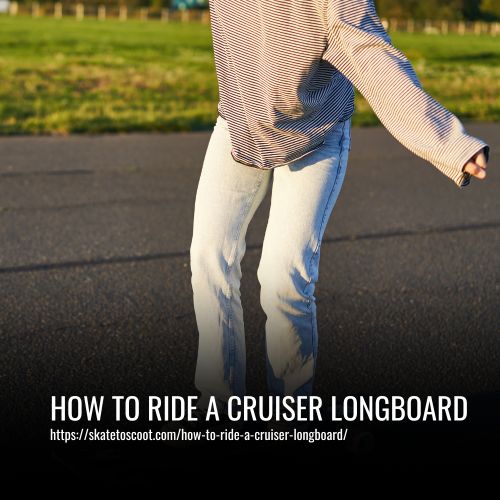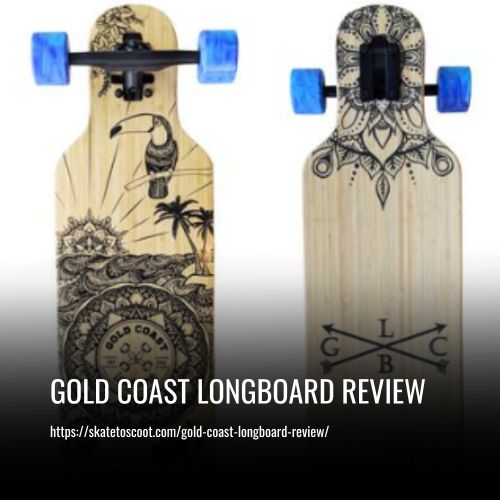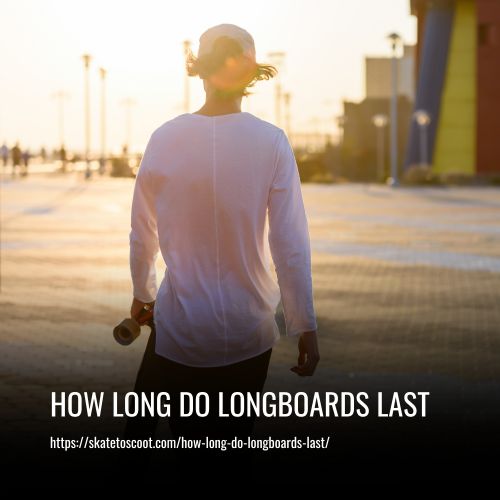As an Amazon Associate we earn from qualifying purchases.
Have you ever seen someone effortlessly cruising down the street on a longboard and thought, “I wish I could do that”? Well, you’re in luck because riding a cruiser longboard is easier than you might think! Whether you’re a beginner or just looking to improve your skills, this article will guide you through the steps to becoming a confident cruiser longboard rider.
Longboarding is not only a fun way to get around, but it also provides a great workout for your legs and core. Plus, it’s a fantastic way to explore your city or neighborhood in a whole new way. So, if you’re ready to hop on a cruiser longboard and experience the thrill of gliding along the pavement, read on.
In this article, I’ll break down the fundamentals of riding a cruiser longboard, including how to properly position your feet, maintain balance, and execute basic turns. By the end, you’ll have all the knowledge and skills you need to confidently ride a cruiser longboard and enjoy the exhilarating feeling of cruising the streets.

What You’ll Need?
To ride a cruiser longboard effectively and safely, there are a few key things you’ll need. First and foremost, you’ll need a cruiser board. These boards are specifically designed for smooth rides and are perfect for cruising around town. Look for one with soft wheels as they provide better grip on the pavement.
In terms of safety gear, it’s always a good idea to wear protective gear, especially if you’re a beginner or planning to ride for extended periods of time. A helmet is a must, and knee pads and elbow pads can provide extra protection. Proper shoes are also important as they help you maintain a good grip on the board.
Now that you have the necessary equipment, it’s important to understand your stance and center of gravity on the board. Most riders have a regular stance, with their left foot forward. However, some riders feel more comfortable with a goofy stance or a natural stance. Experiment with different stances to find what works best for you.
When riding, make sure to distribute your body weight evenly and maintain a low center of gravity. This helps with balance and control. To brake, use your rear foot to gently press on the ground or use a foot brake if your board is equipped with one.
Ride A Cruiser Longboard: Step-by-Step Guide
Riding a cruiser longboard is an easy and fun way to get around town. To begin, stand on the board with your feet shoulder-width apart and your feet positioned in line with the trucks of the board.
1. Take a Stance:
Determining your stance is crucial for a comfortable ride. Most riders have a regular stance, with their left foot forward. However, some riders prefer a goofy stance or a natural stance. Experiment with different stances to find what works best for you.
2. Kicking Things Off:
Assume your stance and lean back slightly. Use your front foot to push off the ground and start moving. Initially, it might feel awkward, but with practice, you’ll get the hang of it. Remember to keep your knees slightly bent to maintain stability.
3. Make a Turn:
Turning on a cruiser skateboard requires maintaining balance and control. Ensure your feet are parallel. If you are regular-footed, lean towards the toe-edge side when turning right and the heel-edge side when turning left. If you are goofy-footed, lean towards the toe-edge side or heel-edge side to turn the board left or right, respectively.
4. Stop:
To stop, lean over and turn your board to the side nearest you. You can slow down by dragging your back foot on the ground. The friction will gradually stop the board.
5. Cruising Trainee:
Practice is essential to improve your riding skills. Start by skating on a familiar and safe route before venturing into busier areas. Practice your stance, footing, turning, and stopping. Create mock obstacles like rocks and cracks to simulate real-life situations. Just keep practicing and enjoy the cruising experience!
Useful Tips For Your Cruising Experience
- Choose the right board: Opt for a cruiser board with a wider deck and larger wheels for better stability and a smooth ride. Consider a smaller-sized cruiser (mini cruiser) for easy portability.
- Pick an ideal cruiser board length: Beginners should go for a cruiser board between 32 to 42 inches for deeper turns and smoother curves. Professional skaters might prefer a longer board, around 46 inches, for more freedom and to perform basic tricks.
- Pick a suitable stance: Experiment with both regular and goofy stances to find which one feels most comfortable for you.
- Wear protective gear: Prioritize safety by wearing a helmet, wrist guards, and knee pads to protect against potential injuries.
- Master the turn: Shift your body weight towards your toes or heels depending on your stance to initiate turns. Practice maintaining balance and coordination to navigate different terrains or obstacles.
- Practice regularly: Start in a safe and familiar area to build your skills and confidence. Practice your push stance, rolling over obstacles, and falling safely.
- Be courteous: Follow traffic rules, anticipate other road users’ behavior, and give pedestrians the right of way.
By following these tips, you can enhance your cruising experience, whether on city streets or more adventurous terrains. Remember to prioritize safety and enjoy the ride!
How To Maintain Balance And Stability While Riding:
When riding a cruiser longboard, maintaining balance and stability is crucial for a smooth and enjoyable ride. Here are some tips to help you keep your balance on the board:
- Focus on the path ahead: Keep your eyes focused on where you’re going, rather than on your feet or the board. By looking ahead, you can anticipate any obstacles or changes in terrain, which will help you maintain balance.
- Relaxed posture: Maintain a relaxed posture while riding. Avoid looking down at your feet, as this can disrupt your balance. Instead, keep your head up and your body relaxed, allowing your natural center of gravity to help you stay balanced.
- Even weight distribution: Keep your weight distributed evenly between your feet. If you lean too much to one side, it can make the board unstable and increase the chances of falling. By distributing your weight evenly, you’ll have better control over the board and maintain stability.
- Knee bend: Bend your knees slightly while riding, as this helps absorb any bumps or vibrations on the road. The slight bend in your knees also helps with maintaining balance and stability.
Remember, practice makes perfect. Start off on a flat and smooth surface and gradually work your way up to more challenging terrain. With time and practice, you’ll develop better balance and stability on your cruiser longboard.
Advantages Of Using A Cruiser Longboard Compared To Other Skateboards
Cruiser longboards offer several advantages over other types of skateboards. Whether you are a beginner or an experienced rider, these boards provide stability, control, and speed while maintaining a comfortable and stylish ride. Here are some key advantages of using a cruiser longboard:
- Higher speeds: Cruiser longboards are equipped with larger and softer wheels, which allow for increased speed. The smoothness of their rolling enables you to cruise at higher speeds with ease.
- Better maneuverability: The looser trucks of a cruiser longboard enable better turning capabilities. This means you can easily navigate tight turns and maneuver around obstacles while enjoying a smooth ride.
- Portability: Cruiser longboards are smaller in size compared to regular longboards, making them more portable and easier to carry around. You can take your cruiser longboard with you wherever you go, making it a versatile option for transportation and commuting.
- Versatility: With their smaller size and easier maneuverability, cruiser longboards can be used for various purposes. Whether you want to cruise around town, commute short distances, or simply enjoy a leisurely ride, a cruiser longboard offers the versatility to do it all.
Selecting The Perfect Cruiser Longboard
When selecting the perfect cruiser longboard, there are several factors to consider. First, think about the type of riding you will be doing. If you plan to cruise around town or commute short distances, a smaller and more portable cruiser board may be ideal. On the other hand, if you want to ride longer distances or tackle rougher roads, a larger and more stable cruiser board would be a better choice.
Next, consider the deck size and shape. A wider and longer deck will provide more stability, while a narrower and shorter deck will offer better maneuverability. Additionally, think about the type of deck material and construction that suits your needs, whether it’s bamboo, maple, or a combination of materials.
Wheels are another important consideration. Look for cruiser boards with larger and softer wheels, as they provide a smoother ride and better traction on various surfaces. You may also want to consider the durometer, or hardness, of the wheels based on your riding preferences.
Finally, don’t forget about safety gear. Always wear protective gear such as a helmet, knee pads, elbow pads, and wrist guards. These will help keep you safe in case of falls or accidents.
By considering these factors, you can select the perfect cruiser longboard that suits your riding style and preferences, ensuring a comfortable and smooth ride every time.
Reasons Why Cruiser Board Is Beginner-friendly
- Big, soft, cruisin’ wheels: The larger and softer wheels of a cruiser board are specifically designed to provide a smooth ride, making them perfect for beginners. These wheels are capable of withstanding rough surfaces, ensuring a comfortable ride even on uneven and bumpy roads. The extra size and softness of the wheels also offer better traction, making it easier to control the board.
- Wide Deck: Cruiser boards generally have wider decks compared to regular skateboards, providing a more stable and beginner-friendly platform. The extra space on the deck allows beginners to find their stance comfortably and maintain their balance. The wide deck also offers more surface area to place your feet, enhancing stability and making it easier to control the board.
- Easy Maneuverability: Cruiser boards are designed to be agile and maneuverable, allowing beginners to navigate city streets and crowded areas with ease. The wider trucks and looser setup of a cruiser board provide a more relaxed and forgiving turning radius, making it simpler for beginners to carve and make gentle turns.
- Comfortable and Smooth Ride: With their larger wheels and wide decks, cruiser boards offer a comfortable and smooth ride, making them ideal for beginners who are new to skateboarding. The combination of softer wheels, wider trucks, and a stable deck minimizes vibrations and absorbs shocks, resulting in a more pleasant experience for beginners.
- Versatile for Various Surfaces: Cruiser boards are designed to handle various surfaces, including rough roads, sidewalks, and even slightly inclined paths. The bigger, softer wheels provide better grip and traction on different terrains, allowing beginners to confidently ride on both smooth and rough surfaces.
- Beginner-friendly Tricks: While cruiser boards are primarily meant for cruising, they still allow beginners to learn and practice basic tricks. The stable platform and forgiving turning radius make it easier for beginners to attempt simple tricks such as kick turns, manuals, and even small ollies.
Overall, cruiser boards are beginner-friendly due to their big, soft wheels, wide decks, easy maneuverability, comfortable ride, versatility on various surfaces, and the ability to learn basic skateboarding tricks. Whether you’re just starting out or looking for a more laid-back skateboarding experience, a cruiser board is an excellent choice for beginners.
Factors To Consider Before Choosing A Cruiser Longboard
When choosing a cruiser longboard, there are several factors to consider that will enhance your riding experience. These factors include deck size, deck shape, wheel size, truck size, and bearing quality.
Deck size is an important consideration as it affects maneuverability and stability. Cruisers typically range from 27 to 45 inches, so choose a size that suits your height, weight, and riding style.
Deck shape also plays a role in the riding experience. There are various shapes available, including pintail, drop-through, symmetrical, and directional. Each shape provides a different feel and performance, so choose one that aligns with your preferences.
Wheel size impacts speed, stability, and maneuverability. Cruisers usually have wheel sizes between 60mm to 70mm. Larger wheels provide more speed and stability, while smaller wheels offer increased maneuverability.
Truck size determines how well your longboard can turn. Typical truck sizes range from 130mm to 180mm. Consider your riding style and preferences when selecting the right truck size.
FAQs
A cruiser longboard is designed for relaxed riding and commuting. It typically has a wider and longer deck than a standard skateboard, providing more stability. The softer wheels and flexible trucks offer a smoother ride, ideal for cruising streets and commuting short distances.
Stand with your feet shoulder-width apart, positioning them perpendicular to the board’s length. Bend your knees slightly to maintain balance, keeping your weight centered over the board. Distribute your weight evenly between both feet, adjusting as needed to steer or make turns.
Pushing involves placing your front foot on the board and using your back foot to push off the ground, propelling yourself forward. For braking, you can use different methods such as foot braking (placing your pushing foot on the ground) or employing the board’s reverse motion by leaning back slightly and using the friction of the wheels against the ground.
To make turns, shift your weight by leaning your body in the direction you want to go. Use your shoulders and hips to initiate the turn, allowing the board to follow your body’s movement. For sharper turns, carve by making S-shaped movements, shifting your weight from toe to heel and using the board’s flex to your advantage.
Always wear appropriate safety gear such as a helmet, elbow pads, and knee pads. Ensure your board is in good condition, with properly tightened trucks and secure wheels. Ride in areas with smooth, even surfaces, and be mindful of pedestrians and traffic. Practice and gradually increase your speed and tricks as you gain more experience.
Practice regularly in a safe environment to build confidence and improve your skills. Experiment with different terrains, practice turning techniques, and gradually challenge yourself with more advanced maneuvers as you become comfortable with the basics. Watching tutorials, joining a community of riders, and seeking guidance from experienced longboarders can also aid in skill development.
Conclusion:
Learning how to ride a cruiser longboard is not just about mastering a new skill, it’s about embracing a whole new lifestyle. So, grab your board, hit the streets, and let the wind in your hair and the pavement beneath your feet take you on an exhilarating journey.
Remember, life is all about balance, and with a cruiser longboard, you’ll find the perfect balance of adventure, freedom, and pure joy. So, get out there and ride like there’s no tomorrow!
Amazon and the Amazon logo are trademarks of Amazon.com, Inc, or its affiliates.



